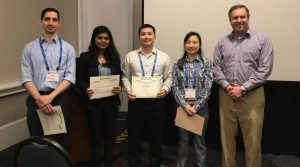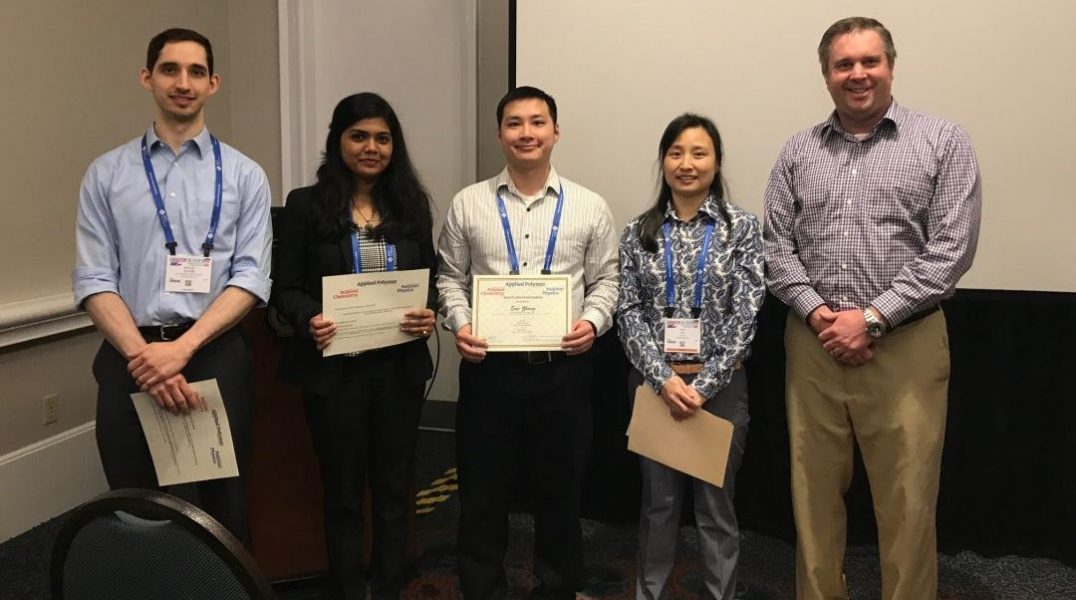Four exceptional young polymer scientists were awarded the 2019 Journal of Polymer Science book prizes for the Division of Polymer Chemistry (POLY) at the American Chemical Society (ACS) Spring National meeting.
Shape, size, and composition are crucial to material design. Dylan Walsh (University of Illinois) shows a scalable methodology to produce large well-defined macromolecules with programmable shape, size, and chemistry, by combining reactor engineering principles and controlled polymerizations. This approach allows construction of these axisymmetric shapes, such as cone, sphere, hourglass, football and bowtie shapes.

Michael Sims (University of Florida, Best Oral Presentation award).
Plastic waste threatens our environment significantly. Michael Sims (University of Florida) describes the use of dynamic-covalent imine chemistry to not only finely control the rate of architectural degradation but also achieve on-demand polymer (re)functionalization. A library of hyperbranched polymers containing imine crosslinks as model degradable architectures. Next, enamines are utilized to enable rapid and efficient side-chain functionalization of β-ketoester-containing polymethacrylates.
Polymers have been widely applied for drug delivery as carriers. To overcome some challenges such as high immunogenicity of polymers, Sampa Maiti (Central Michigan University) develops sugar poly(orthoester) (SPOE) polymers that are synthesized using copolymerization of a novel alkyne-functionalized glucose monomer to a non-functionalized glucose monomer at various ratios. The achieved random copolymers do not cause any aberrant immune activation.

Left to right: Dylan Walsh (University of Illinois, Best Oral Presentation award), Sampa Maiti (Central Michigan University, Best Poster Presentation award), Eric Zhang (Clemson University, Best Poster Presentation award), Ying Jia (editor of JPSB), Chris Ellison (Professor, University of Minnesota)
Optogenetics combines optics and biology to control living tissues. Eric Zhang (Clemson University) proposes a radioluminescent rare earth oxyorthosilciate nanoparticle to study optogenetics. Core-shell approach is used to synthesize the nanoparticle template, and the inorganic particulate is modified with 3-(trimethoxysilyl)propyl methacrylate following by the precipitation polymerization of divinylbenzene to poly(divinylbenzene) (pDVB). The carbonization of pDVB to amorphous carbon prevents particle-particle contact at extreme temperatures in an inert environment.
Congratulations to Dylan, Michael, Sampa, and Eric!

















